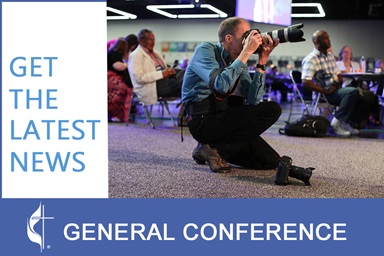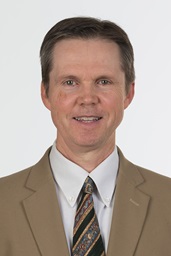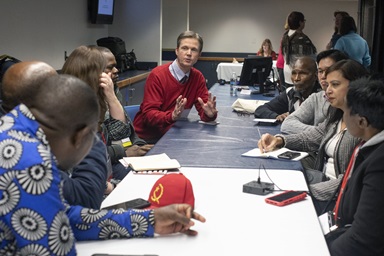From helping The United Methodist Church understand how the past informs the denomination’s future to managing $23 billion in pension assets, the work of the administrative agencies touches ministry in myriad ways.
The communications agency is designing an overarching communications system to serve the entire denomination, while the finance agency — in addition to managing apportioned funds and collecting data — works to reduce costs to save money for ministry.
Archives and History will lead the church in observing its 50th anniversary this year, while the pension agency manages pension assets for more than 100,000 participants.
And the United Methodist Publishing House is working to understand the needs of church leaders and members and craft resources that will best suit their ministries.
1968 unity decision can inform current issues
A 2018 focus on the 50th anniversary of the merger that created The United Methodist Church can help the denomination as it faces current divisions, said the top executive of United Methodist Archives and History.
“When there is so much division in the air, it is good to remember a conscious decision to embrace unity,” said the Rev. Alfred Day III.
The April 23, 1968, merger of the Methodist Church and the Evangelical United Brethren Church came just weeks after the assassination of the Rev. Martin Luther King Jr., at a time when there was great political division in the U.S. over the Vietnam War, Day said.
“With tumultuous stuff happening all around the world, the church was a witness to what unity looks like. We recognized how we can be better together than alone,” Day said. He hopes remembering that moment can be helpful as the church seeks unity amid deep divisions over homosexuality.
The commission is collaborating with United Methodist Discipleship Ministries and United Methodist Communications to produce a short anniversary video for local congregations. The commission is also developing other anniversary resources.
“The video and other resources are for congregations to learn about sharing and embracing the church that we envisioned in 1968,” Day said.
The merger also resulted in the end of a separate Central Jurisdiction for black United Methodists and institutionalized racism in the denomination, Day said. The United Methodist Commission on Religion and Race was created as part of that effort.
The Disciplinary mandate of the commission is preserving the denomination’s heritage, but Day said the commission also tries to work with local churches and individuals to help people understand that “history isn’t only looking backward” or preserving the past.
“It’s about raising people up who find inspiration in the past that they can use to motivate vision and planning for the future,” Day said.
In addition to 50th anniversary resources, the commission developed Heritage Sunday resources in 2017 to help local churches celebrate their own history. Plans this year include an expanded local church historian school and curriculum to help local church leaders to discover and engage their local histories.
The commission, which has a budget of just under $1.1 million for 2018 — down from slightly over $1.2 million in 2017 — hired a new communications director and developed a strategic communication plan as part of its effort to be more visible in the church.
Efforts toward greater financial stability include creating a planned giving program.
Sixteen informational and inspirational pieces on United Methodist historic figures and events were developed, as well as stories on historic site dedications. The commission launched Amazing (g)RACE, a geocaching program about United Methodist Heritage Landmarks.
Other major accomplishments in 2017 include:
- Dedicated seven United Methodist historic sites and participated and collaborated with Board of Church and Society in recognizing Norway’s indigenous people.
- Collected oral histories in racial-ethnic churches via The African American Methodist Heritage Center and The Committee for the Study of the Hispanic-Latino UMC.
Agency works toward messaging for whole church
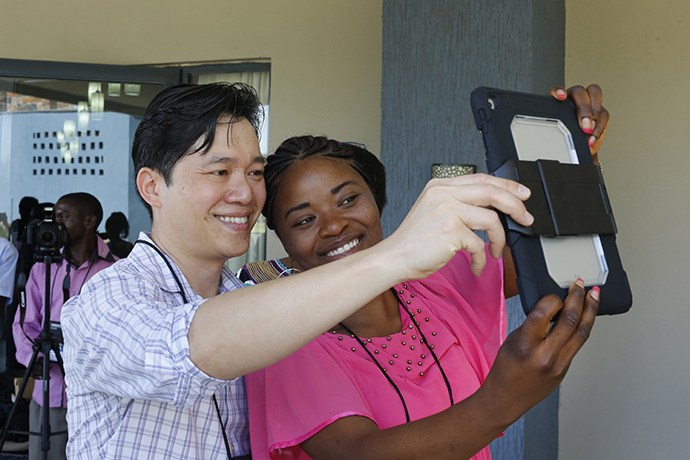
Danny Mai poses for a photo for Irene Kashala Tsheleka from the Democratic Republic of Congo during a training for communicators from the Congo Central Conference held Nov. 13-18, 2017, in Ndola, Zambia. Photo by Kathleen Barry, United Methodist Communications.
United Methodist Communications is designing an overarching communications system to serve the entire denomination, strengthen local churches, and give leaders and members greater access to resources, its top staff executive says.
In 2017, the agency invested in a new customer relationship management system that will allow the denomination to have a communications database of members, leaders and seekers, who will be able to choose the information they want to receive, Dan Krause said.
“It requires a total mind shift of what communication looks like in The United Methodist Church,” he said. Contact information will be shared instead of divided among different databases across the church.
“In a membership organization like The United Methodist Church, our members, who live in the world in a 2018 context, expect that their membership information would be shared within the denominational structure,” Krause said. People will be able to manage their profile and preferences for resources, opt in or out, and know they won’t be spammed.
With a common messaging platform, the church will be able to communicate more effectively about what it means to be United Methodist and witness to Jesus Christ, he said.
“We really see part of our challenge being that we have a broken communication platform in The United Methodist Church,” Krause said. People are receiving communications from 13 agencies plus annual conferences and local congregations.
“There’s not one way to interface with the church. We’re trying to create one overarching communication channel.”
Several new websites are being developed by other agencies, he noted. “That is not a good demonstration of stewardship for the funds entrusted to us by our members.”
Instead, United Methodist Communications is designing dedicated websites for all agencies to use in serving church leaders, members and seekers, as well as a news site. The news site will roll out in the spring, followed by the leader site in the summer and the member site, UMC.org, in the fall.
“After 2018, there will not be a United Methodist Communications independent website,” Krause said. “We believe The United Methodist Church will be stronger by having one overall communications platform. Rather than having a UMCom.org website, we would see communications being a link under larger sites. By us living into that, we hope others will come along in the future.”
The agency’s four strategic goals are to tell the church’s story; be the communications leader for the denomination; equip all levels of the church; and be a good steward of resources and staff.
It has created a local church support team to serve congregations better, and it is emphasizing global ministry by increasing engagement in different languages and regions.
The agency’s budget of $23.7 million includes $2.8 million from reserves for two initiatives aimed at growing global ministry and strengthening local churches.
“We believe that the spirit of God is leading The United Methodist Church to new and exciting places,” Krause said. “… We want UMCom to help the church get to wherever that may be.”
Finance agency more than numbers
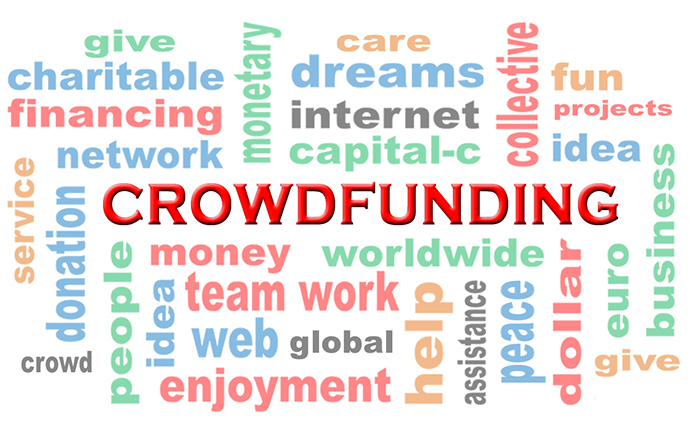
The General Council on Finance and Administration published a guide in 2017 for U.S. churches considering crowdfunding sites. Illustration by Dieter Scheppeit, courtesy of Pixabay; modified by UMNS. Read more about the guide.
It’s easy to think of the General Council on Finance and Administration as the denomination’s numbers people.
After all, staff administer general church apportionments — the share each conference pays to support international and national ministries. The agency also collects denominational data from conferences such as church membership and worship attendance figures.
However, ministry — not the digits on a spreadsheet — drives the agency’s efforts, says Moses Kumar, its top executive.
“The first question we always ask with any new project or program that we start is: How will it benefit the local church?” Kumar said.
He uses the example of the agency’s sponsorship program. The agency long has found corporate sponsors to help defray the costs of General Conference, the denomination’s top policymaking assembly.
GCFA also seeks out “ministry partners,” whose services local churches can use. A list of those ministry partners is posted on the agency’s Local Church Resource Guide. The list includes companies the agency has vetted and that in some cases, offer church discounts.
UMCmarket.org, which enables people to make donations to United Methodist ministries alongside their online purchases, is overseen by GCFA.
The agency helps provide shared services such as information technology and travel planning for conferences, agencies and other United Methodist ministries and is looking at providing IT services for local churches such as a help line.
Kumar said the agency works to reduce the costs of church operations “so any dollars saved can be used for their ministry.”
“The local church needs to know we are there to enhance the ministry in the area of administration and finance so they can bring people to Jesus Christ,” he said.
Over the next four years, the General Council on Finance and Administration has set the following three goals:
- Support ministry throughout the connection, with a focus on local churches, by creating new or enhanced current shared services or resources for at least 10,000 churches globally
- Ensure appropriate understanding of the importance of general church connectional giving to result in an overall giving rate of at least 90 percent to general church apportionments
- Partner with others in the United Methodist connection to identify efficiencies and reduce redundancies
In 2017, shared services were expanded.
GCFA is preparing to hold training sessions this year in the Philippines and Africa on stewardship and collecting the data for the annual conference journals that General Conference now requires to determine delegate counts. During the training, agency staff also plan to explain the new General Conference-approved apportionment formula for central conferences — church regions in Africa, Asia and Europe.
Kumar also hopes to train central conference leaders about attracting local ministry partners to help underwrite the costs of their annual conference meetings, just as his agency does for General Conference.
This year, the agency also wants to provide other online training opportunities on such topics as financially preparing for natural disasters.
General Council on Finance and Administration has a 2018 budget of $8.6 million.
Pension agency manages $23 billion in assets
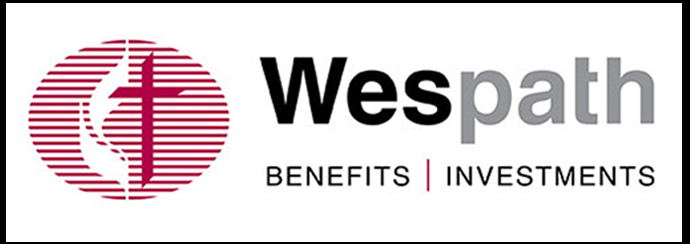
The logo for the former United Methodist Board of Pension and Health Benefits features a first syllable that points to John Wesley, Methodism’s founder, with the second suggesting the agency will follow Wesley’s and Methodism’s way. Logo courtesy of Wespath.
Wespath Benefits and Investments, formerly the United Methodist Board of Pension and Health Benefits, is by any reckoning one of the largest, most influential parts of The United Methodist Church.
In 2017, Chicago-based Wespath administered $23 billion in assets for more than 100,000 participants and more than 100 United Methodist-affiliated institutions. It’s self-described as “the world’s largest reporting faith-based pension fund” and among the 100 largest pension funds in the U.S.
Wespath also offers health insurance to United Methodists, covering some 8,000 clergy and other church staff, as well as family members.
“A lot of our work directly impacts local churches, particularly in that it directly impacts clergy,” said Barbara Boigegrain, top executive of the agency since 1994.
Part of the agency’s work in 2017 was helping United Methodists get used to the name “Wespath,” adopted the year before. One syllable points to John Wesley, Methodism’s founder, and the other suggests the agency will follow Wesley’s and Methodism’s way.
Wespath’s conduct and trajectory get scrutinized, given the size of its investments. A spirited debate at General Conference 2016 dealt with whether Wespath should sell holdings in fossil fuel companies.
The Fossil Free UMC group argued with passion, but Boigegrain persuaded most delegates that Wespath can better influence corporations to tackle climate change by “staying at the table.”
In 2017, she said, that strategy was validated.
At an Occidental Petroleum stockholders’ meeting, Wespath and the Nathan Cummings Foundation called on the company to provide a detailed report assessing the impact of climate change. The resolution carried by 67 percent — the first of its kind in the U.S. to get majority support.
“That seems to have kicked off some even greater momentum,” Boigegrain said, noting that ExxonMobil stockholders’ later passed a similar measure.
Wespath’s sustainable investment strategies include supporting companies that provide solar lanterns to poor, rural communities in Africa. The agency lends money in all 50 U.S. states for construction and rehabilitation of low-income housing.
In 2017, Wespath did training for central conference benefits officers. It helped lead the Church Alliance, a coalition of faith-group benefit programs, in lobbying Congress through debates on health care and tax reform, with a focus on protecting financial security for clergy and other church employees.
Boigegrain said Wespath’s 2018 agenda includes more financial literacy training for clergy and doing a large-scale review of benefits plans.
The agency is acutely aware of the schism threat in The United Methodist Church, as well as the shrinking size of most U.S. conferences.
“Our line of sight is 10 to 20 years out. We need to make sure the benefits are affordable, sustainable and adequate,” Boigegrain said.
Wespath in 2017 was recognized as one of the Best and Brightest Companies to Work For in Chicago.
The agency is self-supporting, with operating expenses covered in part by investment income. In late January, its board approved a 2018 operating budget of about $60 million.
Publishing House aims to produce best ministry resources
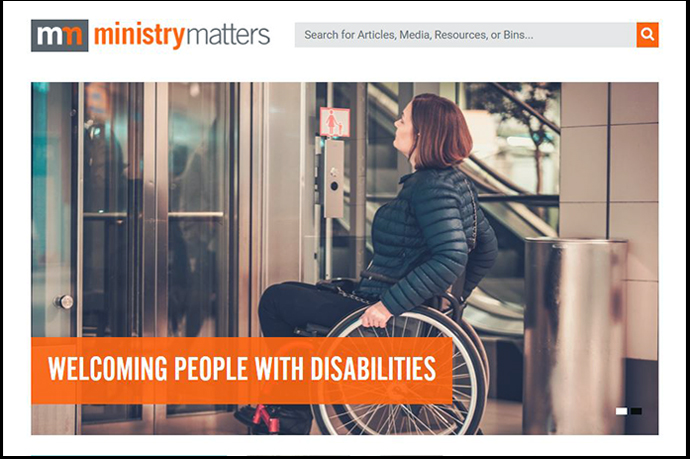
The Ministry Matters website is a ministry of the United Methodist Publishing House, which seeks to support church leaders and their ministries. Image courtesy of Ministry Matters.
The Rev. Brian Milford, the United Methodist Publishing House’s top executive, cited several goals that are ongoing, like understanding the needs of church leaders and members and crafting resources that will best suit their ministries.
Milford reported the production of more than 2,000 new products in the past fiscal year; serving almost 325,000 customers by phone, email or live chat; 1.8 million visits to the Ministry Matters website; and shipping of 526,357 orders to customers around the world.
One resource Milford highlighted was the vacation Bible school program “Hero Central,” which was used by more than 8,600 churches last summer. He also said thousands of confirmation classes used Abingdon Press’ “Confirm” and “Credo” resources, and tens of thousands engaged in Bible study through Adam Hamilton’s “Creed” program, Abingdon Women Bible studies, Covenant Bible Study, Adult Bible Studies and DISCIPLE.
The Publishing House, now in its 229th year, receives no general church funding, so one ongoing goal is to be self-sustaining. The net operating revenue for its fiscal year was $1,526,000. Most of the net income goes toward retiree pensions and health plans, and capital investments.
Future goals include continuing to create imaginative approaches for new customers and products. There will be more ways to customize products to fit different ministry contexts, such as online curriculum builders and print-on-demand options, as well as seeking out new media-on-demand options for congregations and leaders. Milford said the Publishing House always has an eye on investing in the future through major capital and personnel.
“Our work by its nature and scope will always be challenging, taking into account vastly different ministry settings, varying interests and diverse emphases of the hundreds of thousands of people and tens of thousands of congregations we serve,” he added.
UMNS staffers Vicki Brown, Joey Butler, Heather Hahn, Sam Hodges and Tim Tanton contributed to this story. To read more United Methodist news, subscribe to the free Daily or Weekly Digests.
Like what you're reading? Support the ministry of UM News! Your support ensures the latest denominational news, dynamic stories and informative articles will continue to connect our global community. Make a tax-deductible donation at ResourceUMC.org/GiveUMCom.


